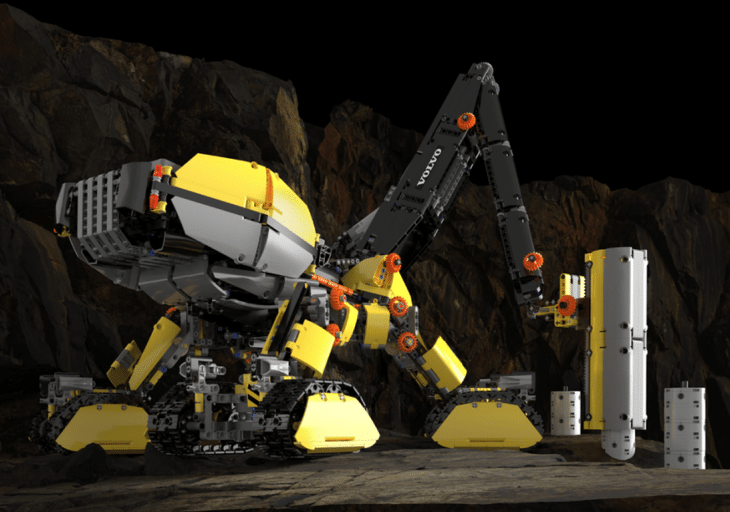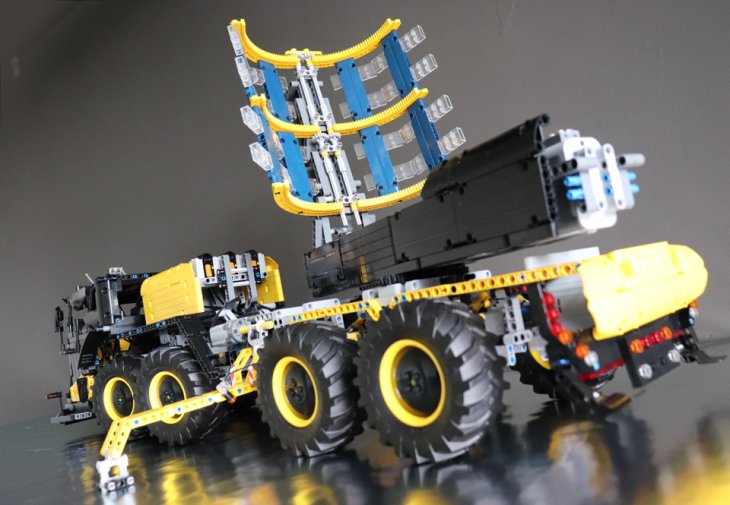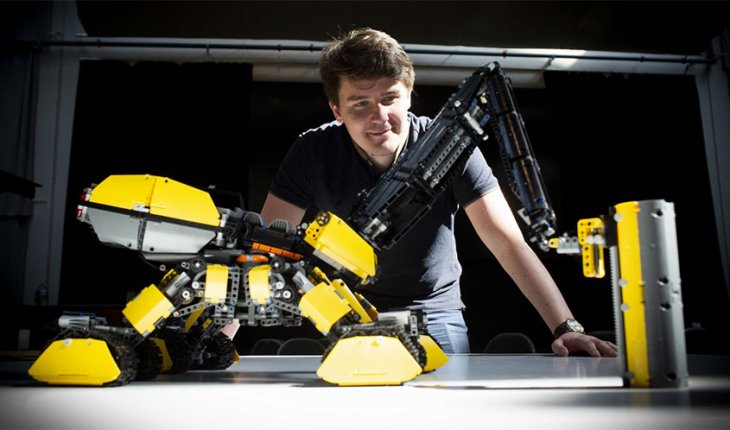This Lego Vehicle Can Function On All Terrain And Could Be Our Future
Alia Nandi - May 31, 2019

Being constructed as an autonomous vehicle which can function on rough terrain, the Volvo Rottweiler is installed with a 3D printer
- Japan Hydrogen Breakthrough: Scientists Crack the Clean Energy Code with Mind-Blowing 1,000% Efficiency Jump
- 'Five-second rule' For Food Dropped On The Floor: Is It True?
- Scientists Want To Send 6.7 Million Samples, Including Sperm, To The Moon
Being constructed as an autonomous vehicle which can function on rough terrain, the Volvo Rottweiler is installed with a 3D printer, which can generate building materials, and it's made of Lego bricks.
The Rottweiler was designed by a 27-year-old Romanian architect named Vida András for a competition on Lego Ideas, which was held last fall by Lego Technic and Volvo Construction Equipment. This was a platform where those who have interests in Lego will present their own constructions with the hope of being made commercially. The goal was to solve future problems by creating machines from the contestants’ imagination.

Against 122 candidates all around the world, the Rottweiler won its medal. Most recently, Volvo Construction Equipment and Lego have cooperated in a wheel loader with the self-driving concept, called the Zeux, published by Lego Technic in 2018.
Measuring of 80x60x80 centimeters, having a unique design using 3,100 Lego bricks with a detachable head and four legs, the Rottweiler really does seem to have a role in a science-fiction movie. András constructed the Rottweiler not only to elicit power but also to make it actually function. Yet, the design absolutely fitted in with what the judges were seeking.
In an attempt of tackling future problems
3D printing enabled architects to create structures that are nearly impossible to be formed by hand. Yet, according to András, these adoptions have not embraced to its absolute potential in construction.
As stated in his answer, using 3D printing for the Rottweiler is an environment-aware approach to minimize the waste of manufacturing. András explains 3D printing can not only help diminish contamination from factories but also refers to it as a virtually wasteless way to produce final products.

With the measurement of 100x60x40 centimeters from 4,000 Lego bricks, a solar power generator with mobility and off-road capabilities named the Volvo Icarus was developed by the runner-up James Cox of London. It was the joke that inspired him to name his machine. Yet, it sounded cool and was suitable to his concept though he obviously didn’t fly that near to the sun.
It was the problems with climate change that inspired Cox to create this machine, just like András.

Both András and Cox was working with such a serious attitude towards their design, which accentuated their research associated and the down-to-earth view of their creations. And it was after a drawing that their approaches started to segregate.
The Rottweiler was constructed using a digital building gadget. It was not until András won the contest that the design started to form its physical reality using the pieces Lego sent. On the other hand, Cox built his machine with physical blocks and submitted his work by attaching a video in which his mobile power generator was put into action.
His intention with the video was to make sure that the judges could see his design actually be able to put into practice, that it could actually work rather than just making some digital without capable of functioning.

How to impress the judges
It’s not easy to produce a model that is likely to win: You need to form an idea that will solve the threat. You need to be knowledgeable to put your imagination into reality. And you also need to have a good taste to make the successful final product.
Surprisingly, the definition of a "stereotype" Lego builder does not exist at all. Some candidates are professional graphic designers or engineers, but there are also some exceptions like a runner-up carrier drone constructed by a 13-year-old.
The truth is this is not at all the first competition for either András or Cox. They have both won in some previous Lego contests and for that reasons, they do know how to impress the judges.
András admits having taken a big step with the Rottweiler as he designed it with a detachable head with a goal of creating a multifunction machine. And we all can see how his ambitious approach had paid off.
He reveals his secret to surprise the judges is to build what makes yourself surprised. And that confidence in your product will definitely play an important role.
His idea does not stop there as he has the intentions of upgrading his design by installing moveable arm, drivability, playability purposes or use Lego Mindstorm computer to make it programmable.
Likewise, Cox also gave out his down-to-earth advice to those who wish to really make it in Lego contest: Go hard or go home.
No matter how smart your designs are, it wouldn't create the impact if it weren’t great. It needs to be great, that’s what Cox shared.
András took pride in the animalistic appearance of his work.
And indeed, the judges assessed the designs upon three criteria: how properly the creations were constructed, how much innovative they can apply to the future and how great the appearance looked. It was the unique features and the modernity that made the winner’s design stand out, according to Arvid Rinaldo, who was in charge of brand communication and partnerships at Volvo Construction Equipment.
He said it was amazing to observe such a unique, sci-fi movie design. And what really mattered was how inspirational it was for their engineers to find out the potential of people all around the world.
Featured Stories

Features - Jul 01, 2025
What Are The Fastest Passenger Vehicles Ever Created?

Features - Jun 25, 2025
Japan Hydrogen Breakthrough: Scientists Crack the Clean Energy Code with...

ICT News - Jun 25, 2025
AI Intimidation Tactics: CEOs Turn Flawed Technology Into Employee Fear Machine

Review - Jun 25, 2025
Windows 11 Problems: Is Microsoft's "Best" OS Actually Getting Worse?

Features - Jun 22, 2025
Telegram Founder Pavel Durov Plans to Split $14 Billion Fortune Among 106 Children

ICT News - Jun 22, 2025
Neuralink Telepathy Chip Enables Quadriplegic Rob Greiner to Control Games with...

Features - Jun 21, 2025
This Over $100 Bottle Has Nothing But Fresh Air Inside

Features - Jun 18, 2025
Best Mobile VPN Apps for Gaming 2025: Complete Guide

Features - Jun 18, 2025
A Math Formula Tells Us How Long Everything Will Live

Features - Jun 16, 2025
Comments
Sort by Newest | Popular